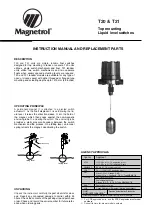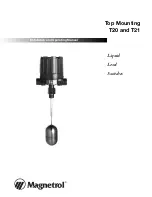
KRAMER ELECTRONICS LTD.
2
1.
INTRODUCTION
Congratulations on your purchase of this Kramer Electronics switcher. Since 1981 Kramer has been dedicated to
the development and manufacture of high quality video/audio equipment. The Kramer line has become an
integral part of many of the best production and presentation facilities around the world. In recent years, Kramer
has redesigned and upgraded most of the line, making the best even better. Kramer’s line of professional
video/audio electronics is one of the most versatile and complete available, and is a true leader in terms of
quality, workmanship, price/performance ratio and innovation. In addition to the Kramer line of high quality
switchers, such as the one you have just purchased, Kramer also offers a full line of high quality distribution
amplifiers, processors, interfaces, controllers and computer-related products. This manual includes
configuration, operation and option information for the following products from the Kramer VS line of
switchers. All these VS switchers are similar in operation and features. The mechanical switchers described in
this manual are listed below:
VS-41AV
- 4x1 Video Audio Switcher
VS-101AV
- 10x1 Video Audio Switcher
VS-4X
- 4x1 Balanced Stereo Audio Switcher
1.1
A Word on Switchers
Switchers route one or more signals to one or more users. They vary in the number of inputs, programming
capability, number of outputs, operating format (composite video, component, audio etc.) and switching method
(i.e., whether they switch during the vertical interval or not, whether they are electronic, RS232 or mechanically
controlled). A video/audio switcher usually switches between several sources (inputs) and one or more
acceptors (outputs). A switcher that allows several inputs to be connected to several outputs simultaneously is
called a Matrix Switcher. Switchers may be of the electronic or mechanical type. Most matrices are of the active
electronic type, with many crosspoints. Vertical Interval Switching, frequently used in video, ensures that the
transition from one video source to another is smooth and without interference. The mechanical switchers
described in this manual have full industrial specifications and are rack-mountable. The video/audio switchers
offer a simple and economic solution for every video/audio application. Due to very careful design the video
bandwidth is excellent.
1.2
Factors Affecting Quality of Results
The factors affecting the quality of results when signals are transmitted from a source to an acceptor are:
Connection cables
Low quality cables are susceptible to interference; they degrade signal quality
due to poor matching and cause elevated noise levels. They should therefore be
of the best quality.
Sockets and connectors of
the sources and acceptors
So often ignored, they should be of highest quality, since "Zero Ohm" connection
resistance is the objective. Sockets and connectors also must match the required
impedance (75ohm in video). Cheap, low quality connectors tend to rust, thus
causing breaks in the signal path.
Distance between sources
and acceptors
Plays a major role in the final result. For long distances (over 15 meters) between
sources and acceptors, special measures should be taken in order to avoid cable
losses. These include using higher quality cables or adding line amplifiers.
Interference from
neighboring electrical
appliances
These can have an adverse effect on signal quality. Balanced audio lines are less
prone to interference, but unbalanced audio should be installed far from any
mains power cables, electric motors, transmitters, etc. even when the cables are
shielded.































